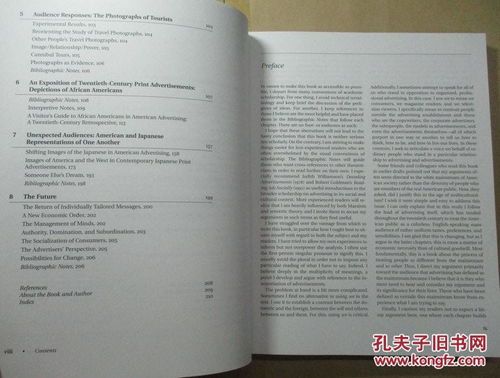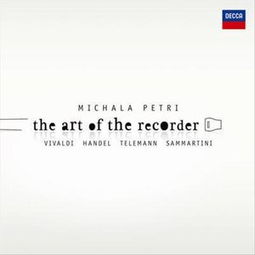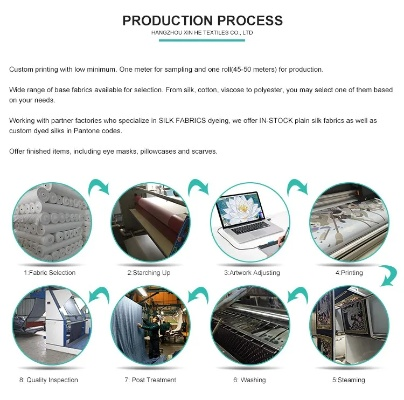Exploring the World of Digital Textiles:A Comprehensive Guide
This comprehensive guide to digital textiles delves into the fascinating realm of digitization in fashion, revealing how technology is transforming the way we create, design, and wear textiles. From the latest advancements in 3D printing to the use of virtual reality for product testing, this book provides a thorough overview of the cutting-edge techniques being employed in the digital textile industry.,With its engaging narrative and practical tips, this guide serves as an essential resource for anyone interested in exploring the world of digital textiles. Whether you're a designer, artist, or enthusiast, this book will inspire and inform your understanding of the exciting possibilities that lie ahead.
Introduction: In the realm of textiles, digital technology has revolutionized the way we perceive and create fabrics. From smart materials to 3D printing, digital textiles are poised to transform industries and redefine our relationship with clothing. In this article, we will delve into the fascinating world of digital textiles, exploring their definition, applications, and how they are shaping the future of fashion and sustainability.

Definition and Classification: Digital textiles refer to fabrics that incorporate digital technologies, such as electronic circuitry, sensors, and software, to enhance their functionality or aesthetic appeal. These fabrics can be classified into several categories based on their use:
-
Smart Textiles: These are fabrics equipped with embedded electronic components that respond to external stimuli, such as temperature changes or pressure. Examples include smart shirts that adjust in temperature based on your body's response, or smart underwear that monitors your health and sends data to a smartphone app.
-
3D Printed Textiles: These fabrics are created using computer-aided design (CAD) software and 3D printers to produce intricate designs. They offer unparalleled customization and can be used for a wide range of applications, from fashion to medical wear.
-
Biotextiles: These fabrics are derived from organic materials like cotton, silk, or wool, but are treated with biotechnology to improve their properties, such as strength or durability. They are often made from renewable resources and have a lower environmental impact compared to traditional textiles.
-
Digital Printing: This process involves using digital images to transfer color onto fabric, creating intricate patterns and designs. It is widely used in apparel and home furnishings industries.
Applications: The potential applications of digital textiles are vast and varied, ranging from everyday wearables to high-end luxury items. Some of the key areas where digital textiles are being utilized include:
-
Fashion: Digital textiles are revolutionizing the fashion industry by offering designers more flexibility in creating unique and personalized pieces. For example, a designer might use a 3D printer to create a custom-fitted jacket that adapts to the wearer's body shape.
-
Healthcare: Digital textiles are being used in medical wearables, such as vests and patches that monitor vital signs or provide pain relief. For instance, a smart vest might alert healthcare professionals if an individual experiences a sudden drop in blood pressure or heart rate.
-
Home Decor: Digital textiles are also finding their way into home decor, with products like curtains and upholstery that can be controlled remotely through a smartphone app. For example, a user might program a smart curtain to automatically open or close based on ambient lighting levels.
-
Sportswear: Digital textiles are being used in sportswear to enhance performance and comfort. For example, a soccer player might wear a customized jersey that reacts to the player's movements and helps them stay warm during intense matches.
-
Retail: Digital textiles are transforming the retail industry by enabling customers to customize their purchases. For example, a clothing retailer might offer a platform where customers can upload their preferred design and have it printed on their clothes.
Case Study: One notable example of digital textile innovation is the development of smart underwear by startup company Threadless. The brand offers customers the ability to customize their underwear by choosing various colors, prints, and patterns. Customers can also add their own designs or choose from existing ones available on the platform. The company uses 3D printing technology to create these customized garments, which are then shipped directly to customers' homes. Threadless has successfully disrupted the traditional underwear market by providing customers with a more personalized and affordable option.
Conclusion: Digital textiles represent a promising future for the fashion and textile industries. By harnessing the power of technology, designers and manufacturers can create innovative products that cater to the needs of consumers while promoting sustainability and ethical practices. As we continue to explore the possibilities of this rapidly evolving field, it is clear that digital textiles will play an increasingly important role in shaping the future of fashion and beyond.
数码纺织品是一种结合了现代科技与传统纺织工艺的新型产品,通过数字化技术手段进行设计和生产,它涵盖了各种新型面料、服装配件、家居装饰等多个领域,具有时尚、环保、个性化等特点,在当今数字化时代,数码纺织品已经成为一种趋势,广泛应用于家居装饰、服装搭配、户外用品等领域。

数码纺织品的特点
-
数字化设计:数码纺织品采用数字化技术手段进行设计和生产,具有高度的个性化定制能力,设计师可以通过计算机软件进行面料图案、颜色、纹理等的设计,生产出符合个人需求和特色的产品。
-
环保材料:数码纺织品通常采用环保材料制作,如可降解材料、再生纤维等,符合现代环保理念,这些材料不仅环保,而且具有耐用、易清洗等优点。
-
高性能:数码纺织品通常具有优良的透气性、吸湿性、防潮防霉等功能,能够满足不同场合的需求,其柔软舒适、贴合人体曲线等特点也使得穿着更加舒适。
数码纺织品的应用领域
-
家居装饰:数码纺织品在家居装饰领域有着广泛的应用,如窗帘、地毯、床上用品等,它们可以根据个人喜好和家居风格进行定制,为家居增添时尚感和个性化元素。
-
服装搭配:数码纺织品在服装搭配领域也具有广泛的应用,可以用于制作各种服装配件,如领带、袖口、腰带等,它们可以根据服装款式和颜色进行搭配,为服装增添时尚感和个性化元素。
-
户外用品:数码纺织品在户外用品领域也有着重要的应用,如帐篷、睡袋、户外家具等,它们可以根据不同的使用场景和需求进行设计和生产,为户外活动提供便利和舒适。
数码纺织品案例分析
以某知名品牌数码纺织品为例,该品牌采用先进的数字化技术手段进行设计和生产,推出了一系列具有时尚感和个性化元素的数码纺织品产品。
-
产品设计:该品牌采用先进的数字化设计软件,可以根据消费者的需求和喜好进行面料图案、颜色、纹理等的设计,生产出符合消费者个性和需求的数码纺织品产品,该品牌还注重产品的环保性,采用环保材料制作,符合现代环保理念。
-
产品特点:该品牌推出的数码纺织品产品具有优良的透气性、吸湿性、防潮防霉等功能,能够满足不同场合的需求,该品牌的产品还具有柔软舒适、贴合人体曲线等特点,使得穿着更加舒适,该品牌还注重产品的个性化元素,可以根据消费者的个人喜好进行定制。
数码纺织品的发展趋势
随着数字化技术的不断发展,数码纺织品的发展趋势也越来越明显,数码纺织品将会更加注重个性化定制能力,满足消费者不同的需求和喜好,数码纺织品也将会更加注重环保性,采用更加环保的材料制作,数码纺织品还将会更加注重智能化和智能化技术的应用,提高产品的使用体验和便利性。
Articles related to the knowledge points of this article:
Four-Letter Textile Brands Names
The Evolution and Present State of Huisheng Textiles
The Fabric of Heritage:Crafting the Future with Shaoxings Textiles



